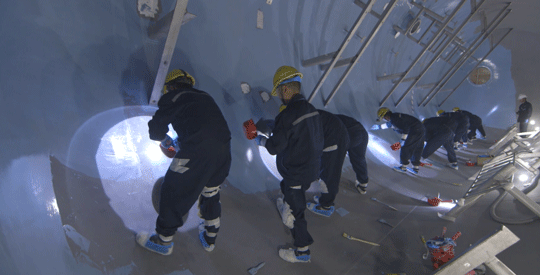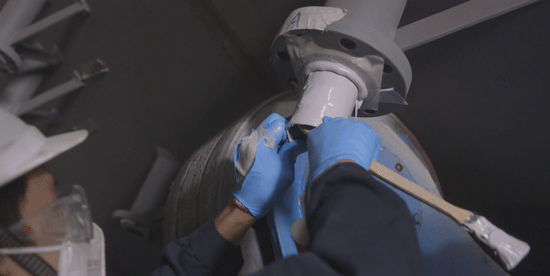The application of a two-part internal lining system for 40 newbuild vessels to be shipped to and installed at the Rumaila oil field in Iraq was recently chosen by the operator as its latest means of corrosion protection. The oil field is owned by the Iraqi government and subcontracted to BP (London, United Kingdom) and China National Petroleum Corp. (Beijing, China).
Discovered in 1953 and located ~20 miles from the Kuwait border, the oil field spreads over a 1,800 km2 (695 mi2) area and is estimated to contain 17 billion bbl (2,703 billion L) of oil, which accounts for 12% of Iraq’s total oil reserves. Rumaila is the largest oil field ever discovered in Iraq and the third-largest in the world.1
Rumalia, however, requires regular investment to manage its reservoir—especially with the oil field in the midst of an expansion project to raise its daily production from 1.3 million bpd (206.7 million L/d) to 2.1 million bpd (333.9 million L/d). A $15 billion service contract was signed in 2009, with owners targeting enhanced oil recovery by water injection as a key technology in the oil field’s development.
Produced Water Reinjection Project
In 2011, front-end engineering and design (FEED) work began on the first phase of the project, the produced water reinjection (PWRI) project. PWRI is used to derive value from wastewater streams and is often implemented due to increasing discharge treatment costs and the tightening of environmental regulations.
The PWRI project, in turn, consists of both cluster pump stations and an integrated processing complex (IPC). The IPC package includes the central processing facility for oil, gas, condensate, and water separation, as well as water treatment facilities. Due to the field’s substantial size, operators planned for two separate treatment facilities for reinjection—one in the north and the other in the south.
To deliver the IPC package, new process vessels, including 10 desalters, 10 dehydrators, and 20 degassers, were specified by the operators. Manufactured in China and produced from carbon steel (CS), the design temperature for each vessel is 212 °F (100 °C)—which meant the vessels would each need protection from high-temperature corrosion attacks due to the high temperatures often encountered in oil production operations.
An Inconel 625† (UNS N06625) alloy cladding was first considered to protect the vessels, but operators saw it as too expensive for the wide scope of the Rumaila expansion project. As a result, the operators turned to industrial protective coatings manufacturer Belzona (Harrogate, United Kingdom) in search of a more cost-efficient solution.
Two Vessel Solutions
Based on the temperatures, pressures, type of media, and preferred method of hand application, a two-part ceramic-filled epoxy coating, Belzona1391T†, was chosen to internally line the shells of each vessel.

The system provides erosion and corrosion resistance to high-temperature equipment operating under immersion up to 248 °F (120 °C). It displays strong resistance to a wide range of aqueous solutions, hydrocarbons, and process chemicals, according to the manufacturer, who adds that it also offers high compressive strength and strong electrical insulation.
The two-coat, solvent-free system can be applied using simple hand tools. With a long overcoat window, it can be rapidly force cured at room temperature, which means hot works are not involved, and applications can be completed with minimal asset downtime.
Meanwhile, a two-part epoxy-based repair composite product (Belzona 1111†) designed for metal repair and protection was used for small bore nozzle protection by bonding in preformed nozzle inserts. This product is based on a solvent-free epoxy resin reinforced with a silicon-steel alloy. The material will not corrode, resists a wide range of chemicals, and is suitable for contact with potable water, the manufacturer explains.
Final Product
In all, 25 tons (22,680 kg) of the ceramic-filled epoxy system were used to coat the 40 vessels involved in the Rumaila expansion project, while ~870 nozzle inserts were required and treated with the repair composite.

All vessels were coated at fabricator yards in China and inspected by NACE International-certified Coating Inspectors before shipment and installation at Rumaila.
The lining system allowed the operator to save 65% in investment costs compared to the traditional alloy cladding solution, according to the manufacturer, which notes that touch-up repairs every five years for the lined CS were factored into the cost analysis.
Source: Belzona, www.belzona.com.
†Trade name.
Reference
1 “Rumaila oil field,” Wikipedia, the free encyclopedia, https://en.wikipedia.org/wiki/Rumaila_oil_field (Feb. 12, 2018).